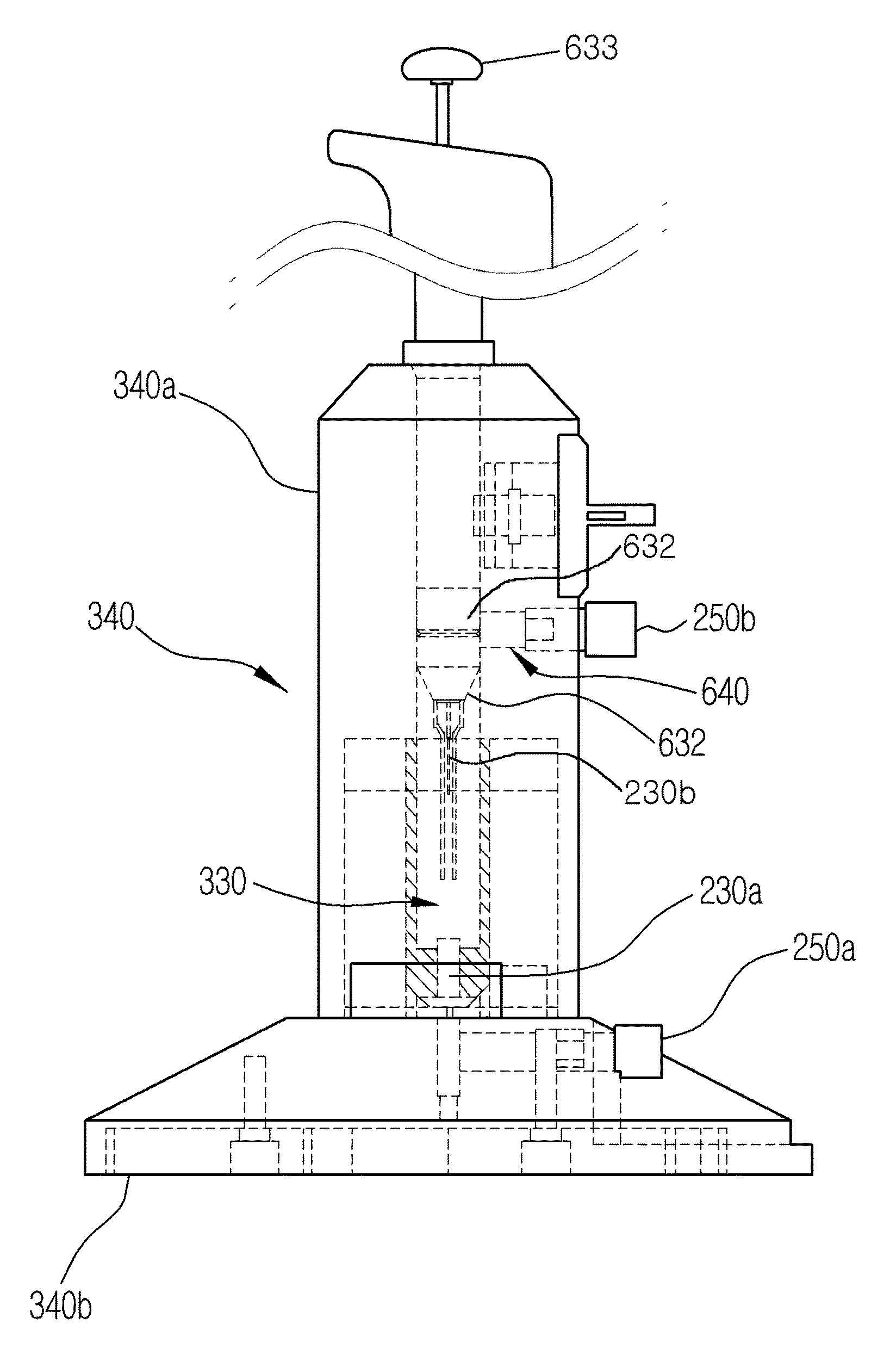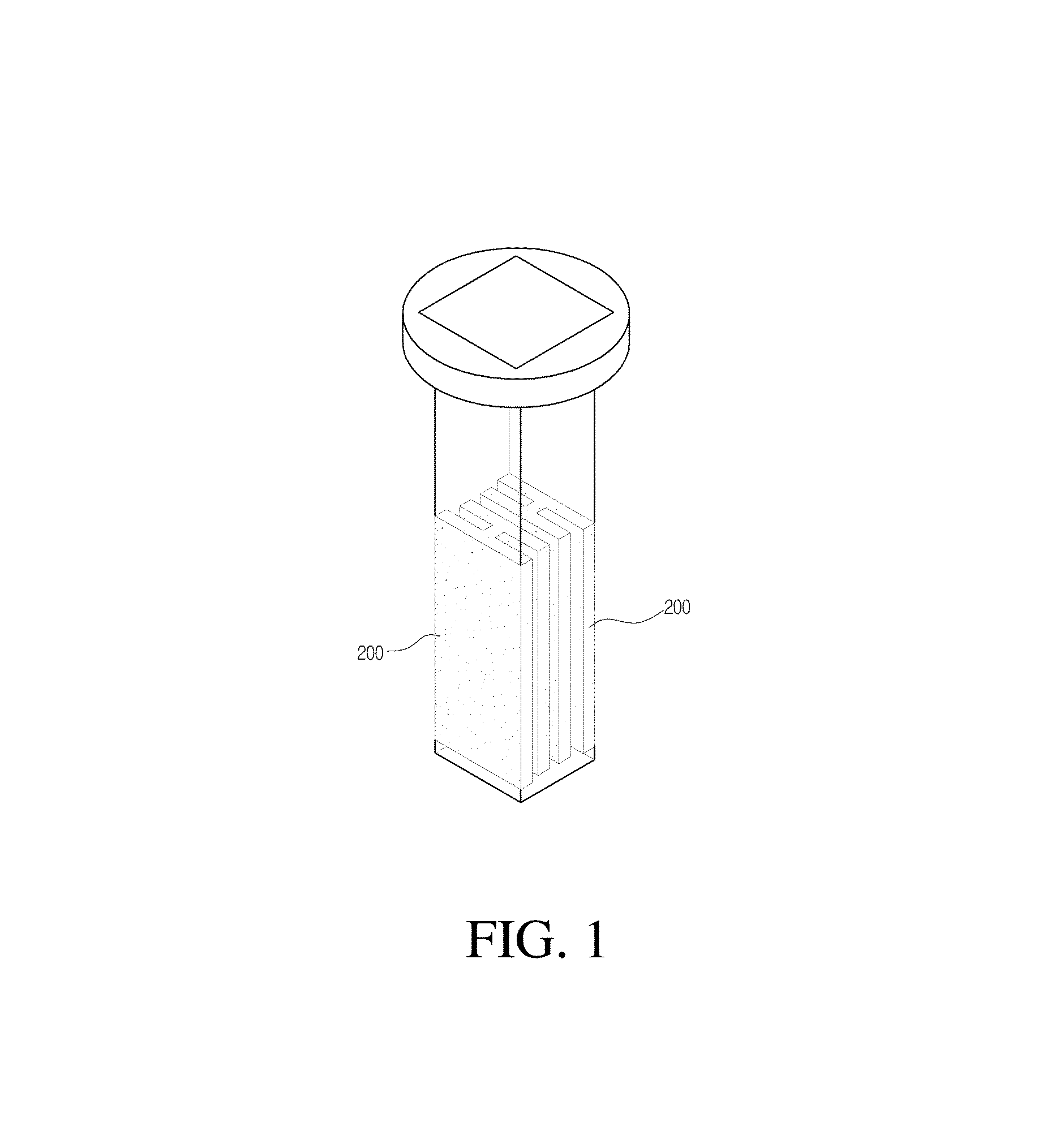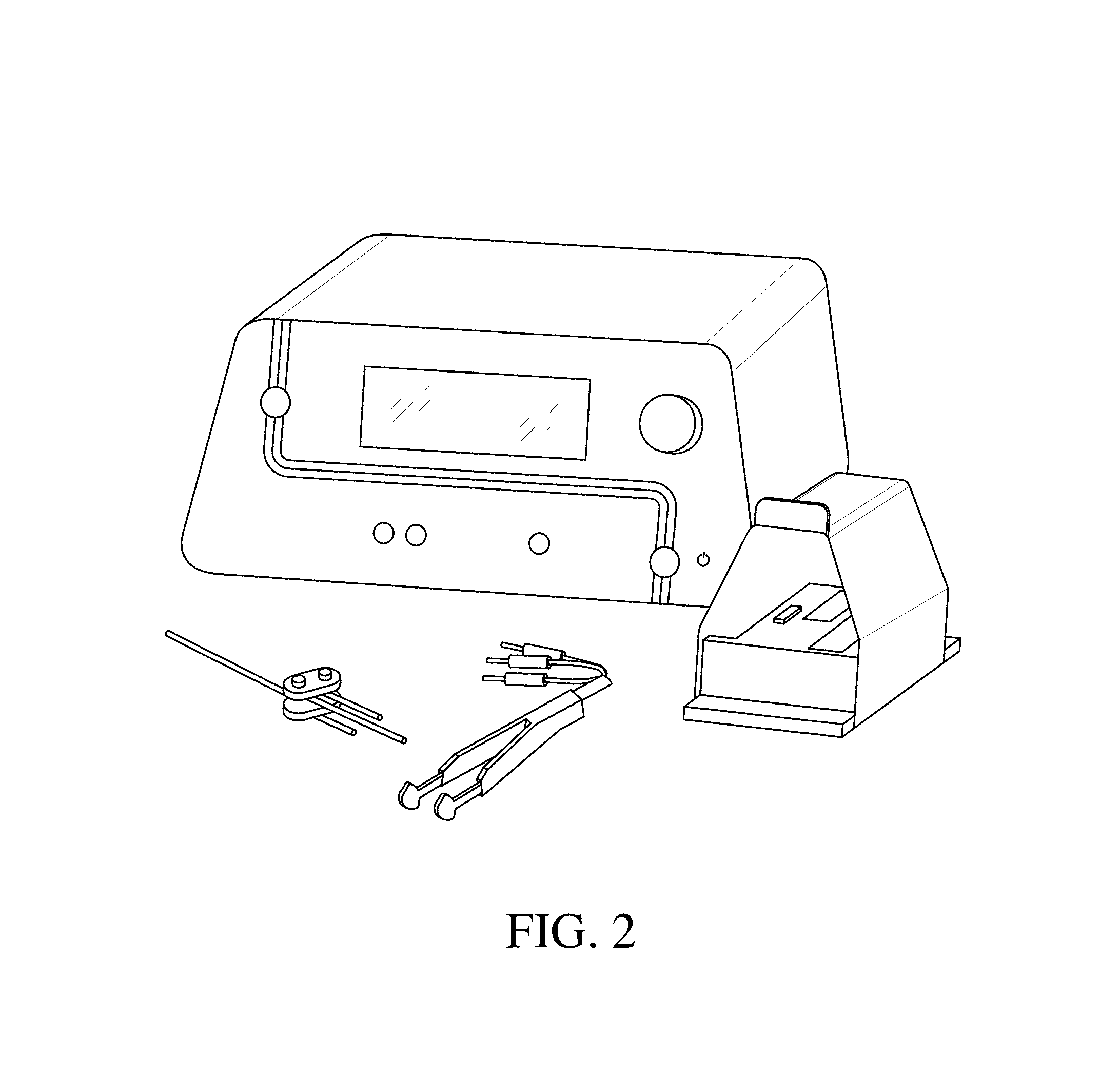Electroporation apparatus having an elongated hollow member
a technology of elongated hollow and electrode, which is applied in the field of elongated hollow member of the electrode, can solve the problems of low knowledge of the cell response, poor cell effect of sup>3+/sup> ions dissolved from the aluminum electrode, and high cost of the electrode of these materials, so as to achieve the effect of miniaturizing the electrode apparatus
- Summary
- Abstract
- Description
- Claims
- Application Information
AI Technical Summary
Benefits of technology
Problems solved by technology
Method used
Image
Examples
embodiment
Preferred Embodiment
Preferred Embodiment 1: Electroporating Experiment of HEK-293 Cell Line using Pipette Type Electroporation Apparatus
1-1. Preparation of Cells
[0079]HEK-293 cell line (ATCC, CRL-1573) was stored in a medium supplemented with 10% FBS in a 25 cm2 culturing flask, cultured in CO2 incubator, and cultured up to 70% confluency. Next, the medium was removed, and the cell was washed using PBS buffer solution, and treated with trypsin. It was added by medium supplemented with FBS and centrifuged. Next, the cell was washed by PBS buffer solution, and suspended again in medium supplimented with 10% FBS to prepare a cell specimen.
1-2. Electroporation
[0080]Approximately 100 μl of HEK-293 cell specimen thus prepared at 1-1 was introduced into a reservoir at room temperature. The specimen of 100 βl was inserted with 5 μg of plasmid DNA pEGFP (obtained from: GenBank Accession: U55762; CLONTECH Lab.) as transfection material and mixed. A distal end of the specimen-stuffing member o...
embodiment 2
Preferred Electroporating Experiment of SK-OV-3 Cell using a Channel-Structured Electroporation Apparatus
2-1. Manufacturing of Micro Channel Structure
[0091]In the preferred embodiment 2, a biological experiment was conducted employing an electroporation apparatus having a specimen-stuffing member of a micro channel structure. An electroporation apparatus disposed with wells for inserting electrodes and channels as hollow specimen-stuffing members for connecting the wells was manufactured by a method such as molding or the like. The channel structured specimen-stuffing members were variably manufactured with 20 μm in height, 2 cm in length and 100 to 500 μm in width of the channel. However, it should be apparent that the channel pattern was formed by photolithographic method using photomasks. For example, first of all, negative photoresist (SU-8, MicroChem, Massachusetts, USA) is spin-coated on a silicon wafer to form a mold master of 20 μm thickness. The soft baking is performed to...
PUM
| Property | Measurement | Unit |
|---|---|---|
| width | aaaaa | aaaaa |
| width | aaaaa | aaaaa |
| width | aaaaa | aaaaa |
Abstract
Description
Claims
Application Information
 Login to View More
Login to View More - R&D
- Intellectual Property
- Life Sciences
- Materials
- Tech Scout
- Unparalleled Data Quality
- Higher Quality Content
- 60% Fewer Hallucinations
Browse by: Latest US Patents, China's latest patents, Technical Efficacy Thesaurus, Application Domain, Technology Topic, Popular Technical Reports.
© 2025 PatSnap. All rights reserved.Legal|Privacy policy|Modern Slavery Act Transparency Statement|Sitemap|About US| Contact US: help@patsnap.com



